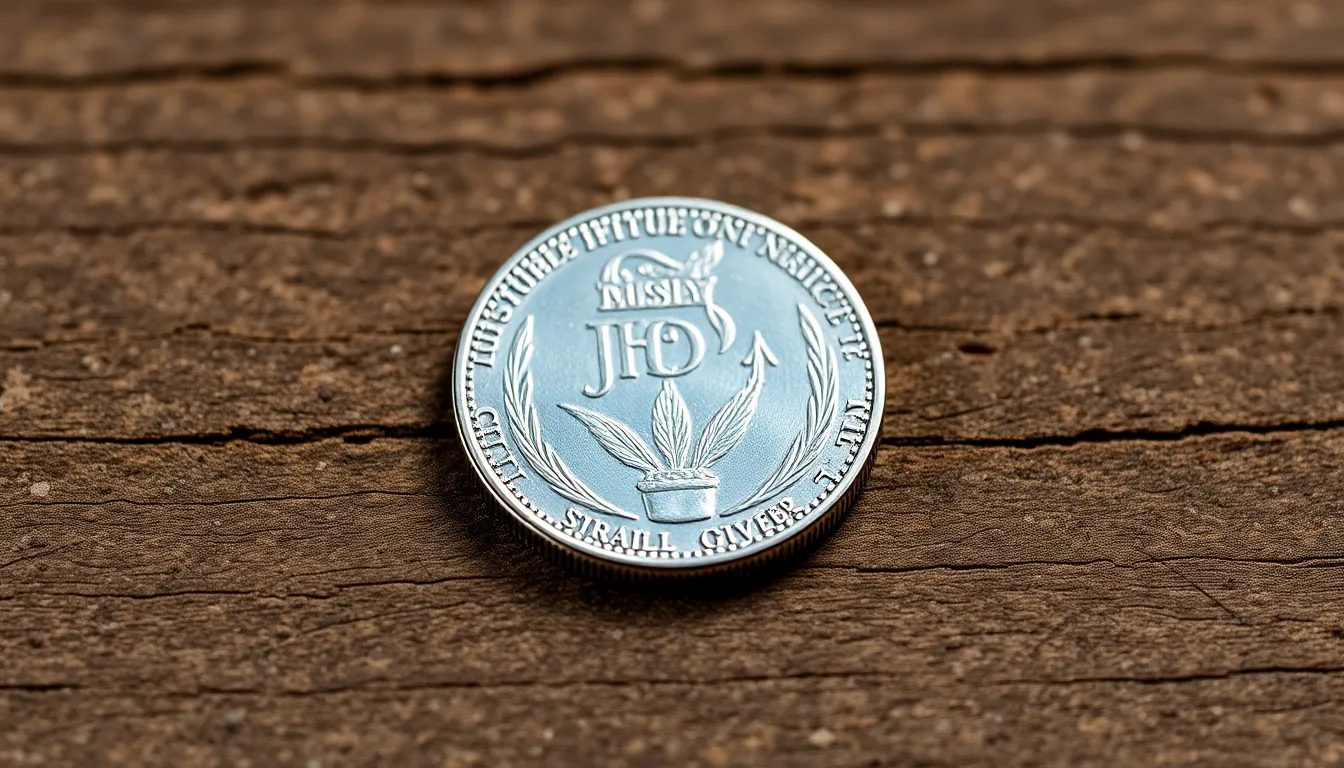Table of Contents
ToggleSilver’s not just a shiny accessory for your grandma’s jewelry box; it’s a hot commodity that can make or break investment portfolios. With the price of an ounce of silver fluctuating like a caffeinated squirrel, keeping an eye on today’s market value is crucial for savvy investors and curious onlookers alike.
Current Market Overview
The current market price of an ounce of silver fluctuates daily, influenced by various economic factors. As of today, the price stands at approximately $23.50, showing an increase from previous weeks. Global demand for silver continues to rise, driven by its use in electronics, solar panels, and jewelry.
Investors closely monitor silver’s price trends alongside economic indicators such as inflation rates and currency strength. A strong U.S. dollar typically correlates with lower silver prices, while economic uncertainty can boost demand. Recently, increased industrial usage has also supported higher values.
Market analysts predict that silver remains a strategic investment option. Authorities have noted that buying during dips may yield greater long-term returns. Traders often utilize technical analysis to determine optimal entry points, considering volume and price movement.
In addition, geopolitical events can impact silver prices significantly. Conflicts or changes in trade policies may cause sudden spikes in demand. Meanwhile, supply issues, such as reduced mining output, influence availability and pricing dynamics.
The physical market also impacts spot prices. Retail demand for coins and bars fluctuates based on investor sentiment, contributing to price adjustments. Overall, tracking daily changes in the silver market remains crucial for making informed decisions.
Historical Price Trends

Monitoring historical price trends of silver helps investors understand market movements. Current fluctuations provide insight into both short-term and long-term behaviors.
Short-Term Trends
Recent weeks saw silver prices rise to approximately $23.50 per ounce. Strong demand from sectors like electronics and jewelry pushes values higher. Investors observe significant price changes during economic events, including inflation reports and currency valuation shifts. Every few days, updates reveal alterations in retail demand for physical silver, with consumer interest impacting overall pricing. Analysts find that short-term volatility often dictates investment strategies, encouraging investors to act quickly.
Long-Term Trends
Long-term trends illustrate varying patterns in silver prices over months and years. Historical data reveals cycles influenced by broader economic factors, from interest rates to currency strength. Observing past performance offers context for current price movements, revealing how geopolitical events shape market dynamics. Price ceilings and floors can emerge, guiding investor expectations. Analysts note that strategically timed buying during down periods frequently leads to favorable returns, especially in a fluctuating market like silver.
Factors Influencing Silver Prices
Silver prices fluctuate due to various factors. Understanding these influences can help investors make informed decisions.
Economic Indicators
Inflation rates often impact silver prices. Rising inflation typically drives investors toward precious metals as a hedge against currency depreciation. Similarly, changes in interest rates can influence silver’s attractiveness; lower rates may prompt increased investment in silver. The strength of the U.S. dollar plays a crucial role too. A stronger dollar usually correlates with lower silver prices, as it makes silver more expensive in other currencies. Tracking these economic indicators is essential for anticipating price movements in the silver market.
Supply and Demand Dynamics
Supply and demand dynamics significantly affect silver prices. Global demand for silver in industrial applications, such as electronics and solar panels, often drives price increases. Conversely, reduced mining outputs and supply chain challenges can create scarcity, pushing prices higher. Retail demand for physical silver, including coins and bars, also fluctuates with investor sentiment. Seasonal trends may alter demand patterns, further influencing market prices. Monitoring these dynamics enables investors to adjust their strategies effectively.
Investment Considerations
Investing in silver offers unique opportunities and challenges that every investor should contemplate. Understanding these factors can shape strategic decisions.
Benefits of Investing in Silver
Investors often seek silver for its dual appeal as a precious metal and an industrial commodity. Demand in electronics and solar energy drives its value, reflecting strong market support. Diversifying portfolios with silver can hedge against inflation and currency fluctuations. Liquidity remains a key advantage since physical silver holds intrinsic value, making it relatively easy to sell. Analysts also note that silver typically outperforms gold during economic recoveries, providing additional potential for gains. Overall, silver’s unique properties and market dynamics position it as a compelling investment option.
Risks of Silver Investment
Investing in silver carries inherent risks that investors should consider carefully. Market volatility can lead to price fluctuations, which often occur without warning. Global economic conditions frequently impact silver prices, making them susceptible to downturns. Supply chain disruptions, including mining output decreases, can create sudden scarcity and price spikes. Interest rates and currency strength play a crucial role in determining silver’s performance; rising interest may divert investment to other assets. Additionally, retail demand for physical silver can shift based on investor sentiment, leading to unpredictable market responses. Understanding these risks allows for informed decision-making in the silver market.
Monitoring the price of silver is vital for anyone looking to invest in this precious metal. With the current price at approximately $23.50 per ounce and ongoing demand from various industries, staying updated on market trends is crucial. Investors should pay attention to economic indicators and geopolitical events that can significantly impact silver’s value. Strategic buying during price dips could enhance long-term returns. By understanding the dynamics of supply and demand, as well as retail sentiment, investors can make more informed decisions in this fluctuating market. Keeping a close watch on silver prices will help navigate the complexities of investing in this valuable asset.










